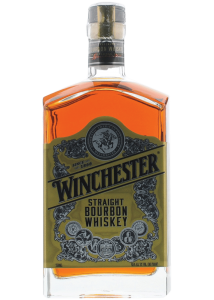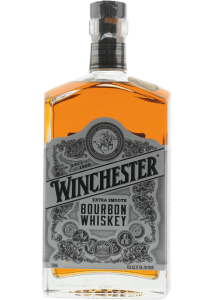“I love bourbon, but can’t get into Scotch? Why?”
First, while both bourbon and scotch are “whisk(e)y”, they’re very different products. Expecting to enjoy one just because you enjoy the other would be like expecting to enjoy grapefruit juice because you enjoy apple juice (I mean, they are both fruit juices, right?) Sure – there are loads of folks who happen to enjoy both (including me!) but a fondness for one isn’t a strong predictor necessarily of how one feels about the other. I know plenty of folks who love one group intensely, and scratch their heads over what the fuss is all about over the other.
I believe this question may come from a misplaced expectation that they’ll be somewhat similar. If you love bourbon and are hoping to find what you love about bourbon in a scotch – you’re probably setting yourself up to be disappointed. The opposite is just as true; someone who loves a delicate, fruity, smokey single malt and is looking for that same profile in a bourbon is likely to have their expectations fall short.
Let’s cover some of the major differences between these two broad categories of whisk(e)y:
1. GRAINS
- Bourbon includes by law a minimum of 51% corn in its mashbill. Typically it is higher than that – 60-70% corn – with the remainder consisting of other grains (such as wheat or rye, and barley). Each of these grains have different purposes, characteristics and impart different flavors. Compare products that are a majority of one grain (like Mellow Corn BIB, Bernheim Wheat or Rittenhouse Rye) with Evan Williams and you get the idea. The proportion of these grains in the mashbill provide unique character to different bourbons (along with a bunch of other factors).
- Scotch (single malt at least) is made with barley – period. No other grains involved. Blended scotch or single grain scotch whisky may use other grains, so let’s set those aside for now. While barley is often a grain in many bourbon mashbills, it is typically the smallest grain component (like 12% or less).
2. WOOD
- Bourbon must be aged in new, charred oak containers (almost always a barrel, but the regs state “container”). This is a critical point, as the charring of that new oak leads to the caramelization of the natural sugars in the wood. As the spirit moves in and out of the wood during the aging period, it is picking up flavors from that caramelization, such as vanilla and caramel. It also gets its dark color from moving in/out of the charred oak. This is why a 4 yr old bourbon will almost always have more color than any 4 yr old scotch (assuming no artificial color is added – which is allowed in scotch but NOT in bourbon).
- Scotch is rarely aged in new oak and is typically aged in used barrels. This makes a huge difference in terms of how quickly the spirit takes on color and flavor, as well as what flavors. Yet another facet is how those barrels were previously used. Because bourbon requires the use of a new barrel, there are a LOT of barrels which previously held bourbon on the market, and a lot of them wind up holding scotch. But scotch can also be aged in barrels which once held sherry, port, and other products. These products each impart different flavors and characters on the spirit. For example, sherry casks give a lot of deep color and dark fruit flavors (and whether it is the first fill of a sherry cask vs a second or even third fill will have an impact). While these used barrels are charred again to ensure there aren’t ugly baddies taking up shop in the wood, this won’t have the same affect as when the wood is new (the sugars were already caramelized the first go round, and have given up some portion of what they have to offer). Oh – and a “single malt scotch” may consists of whisky aged in different containers blended together in the final product.
3. CLIMATE
- Bourbon has to be made in the United States by law, and the overwhelming majority of it is produced in Kentucky – which sits between 36th and 39th parallel (the entire continental US runs from the 25th to the 49th parallel). Bardstown, the “bourbon capital of the world” (just ask anyone from Bardstown; they’ll confirm this is THEIR title), sees average high temps ranging from 43°F in January to 87°F in July, with a typical swing of 20-25 degrees between the average lows and highs each month. What that has to do with bourbon is how much that spirit goes into and out of the wood. Keep in mind that within those rickhouses, the summer temps get considerably hotter in the summer (and vary based on location within the rickhouse), and maintain more steady temps in the winter – but let’s set that aside for the sake of a more direct comparison to scotch. Besides going in/out of the wood, the temps (along with some other factors like humidity, etc) tend to drive the proof of the whiskey up in casks aged higher in the rickhouses.
- Scotch has to be made in Scotland by law, and the mainland all sits between the 55th and 59th parallel – only a slightly larger zone than Kentucky (but much further north!) Just for the sake of comparison, let’s look at Glasgow’s climate. Their average low temp is also 43°F in January, but in July their average high is only 66°F – about half the jump that Bardstown sees! As important as that, they see a typical swing of only 7-12 degrees between their average low and high temps. This all means that the spirit is interacting with the wood a lot more slowly. Besides taking longer for the cask to impart flavors, it provides for more of an impact from oxidation and good ol’ time. Coupled with humidity and other factors, the proof tends to go down in the whisky as it ages – which is one reason you don’t see a lot of “high proof” scotch compared to bourbon.
Now there are absolutely other differences between these two (notice how I’m avoiding peat entirely?) In fact, if you’re curious about what other variables impact a whiskey, Richard did a great job of listing many more here. When you start combining just the three mentioned above – hopefully it is clear why these whiskies are so different. In my opinion, those differences aren’t a disappointment in any way/shape/form. They’re wonderful and should be celebrated!
At the end of the day – it is perfectly OK to not like one or the other (or either, although I’m not sure why you’re reading this if that’s the case). It shouldn’t be a chore to “like” something for crying out loud (in-laws and co-workers excluded). But I hope you’ll continue to try new things because that’s the only way to learn what you will or won’t like. Keep an open mind going in, and most importantly – have fun. A wise old man once told me “If you’re having fun, you’re doing it right”. I’m not sure exactly how wise he is, but on that note I think he got it exactly right.
Cheers!
Gary
“I love bourbon, but can’t get into Scotch? Why?” Read More »



